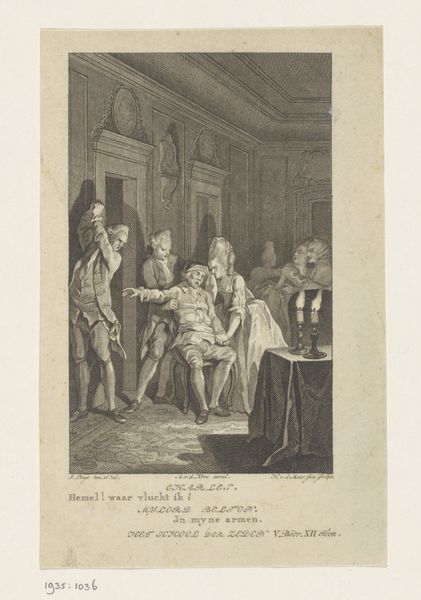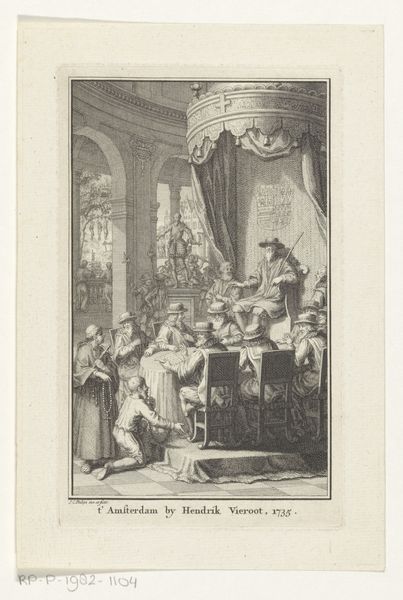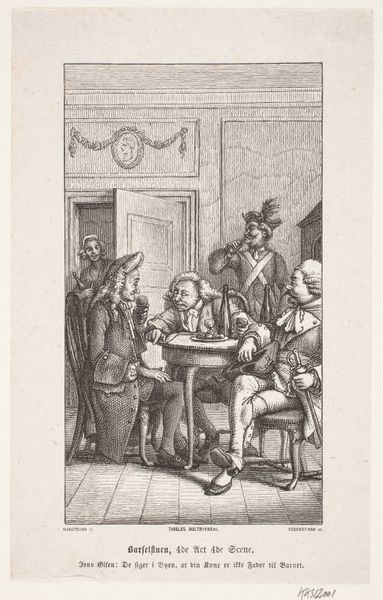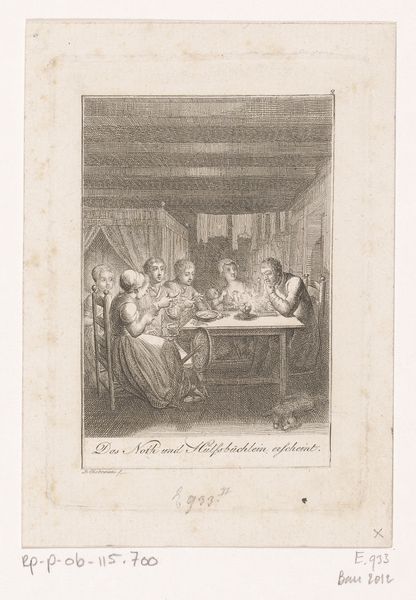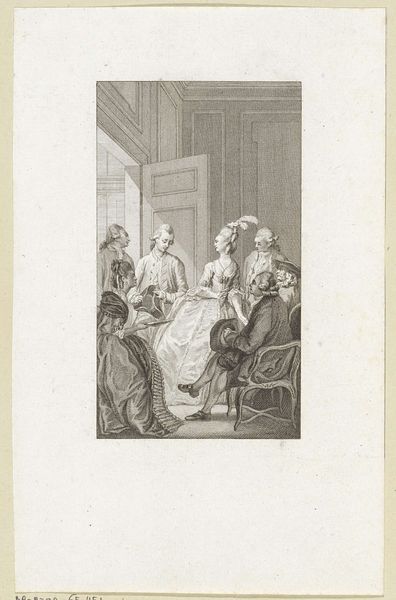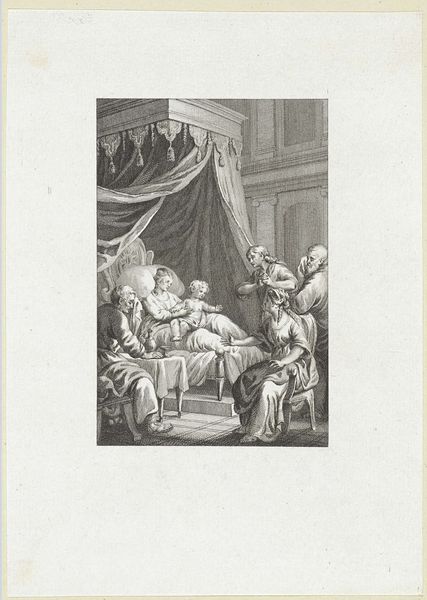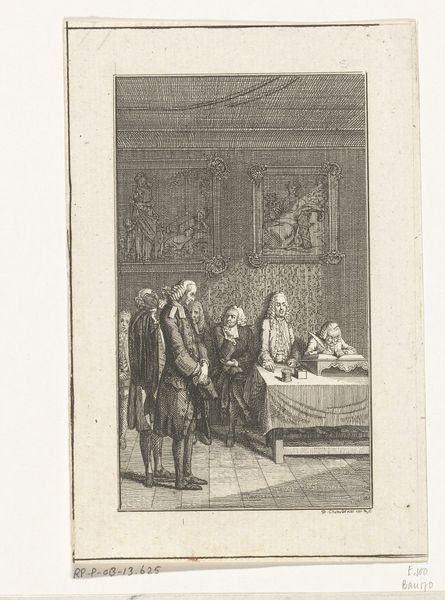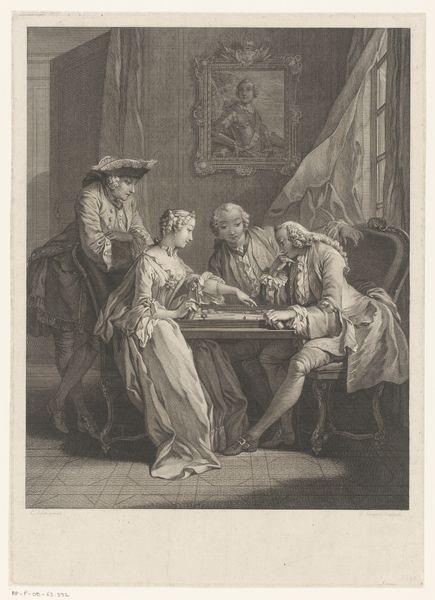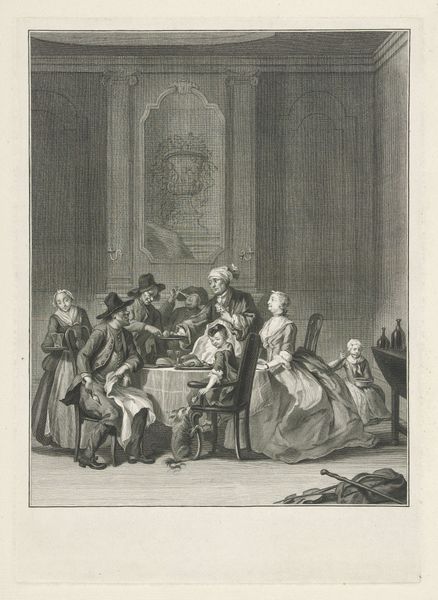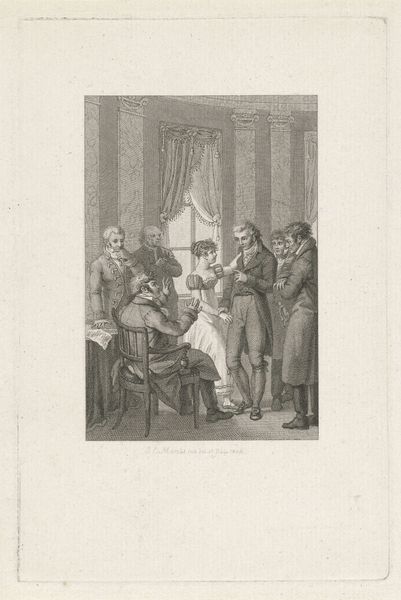
Dimensions: height 162 mm, width 106 mm
Copyright: Rijks Museum: Open Domain
Curator: "Vier officieren in de herberg," or "Four Officers in the Inn," an etching made around 1790 by Daniel Nikolaus Chodowiecki, captures a specific kind of intimacy I find incredibly compelling. Editor: Intimacy? I see drunken camaraderie, maybe. And something vaguely predatory in that embrace on the right. It feels almost… staged. Curator: Exactly! That’s the 18th century for you. Chodowiecki often depicted scenes of social interaction loaded with commentary. Think about it: we have these military men in a tavern setting, seemingly unwinding. The engraving offers a window into the social lives, but also potentially the behaviors of the military class at the time. Editor: Yes, the setting tells us a lot about how art functions in the public sphere. Taverns weren’t just places to drink, they were centers of political discussion. And this print, likely circulated widely, puts these officers on display for public scrutiny. Does it valorize or critique? Curator: Perhaps both? Note the dynamic in the image: the almost transactional interaction on the right – the officer embracing a woman – contrasts sharply with the other officers’ quiet conversation. What power dynamics are in play? Is this just 'boys will be boys,' or are there implications regarding consent, class, and social norms? The woman is not portrayed very gently... Editor: And it’s fascinating how the artist utilizes etching to create this sense of depth and social commentary. The sharp lines allow him to create such detailed observations, making it almost seem like a political cartoon. It speaks volumes about how accessible art was becoming at the end of the 18th century and how artists like Chodowiecki were taking on the responsibilities of journalism, commenting on the current affairs. Curator: Precisely. By situating the piece within a broader social, and maybe a feminist framework, we can engage in an important conversation about power, gender, and the complexities of social class that persisted then, and indeed are with us still today. Editor: I agree, looking at the political role and its complex layers reveals its historical significance to art today.
Comments
No comments
Be the first to comment and join the conversation on the ultimate creative platform.

